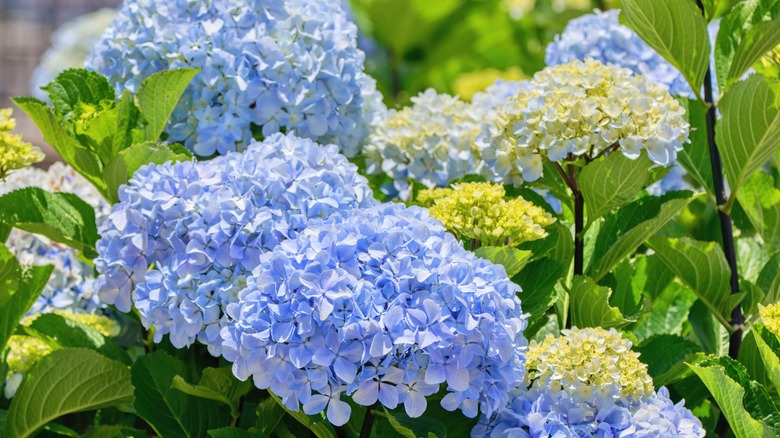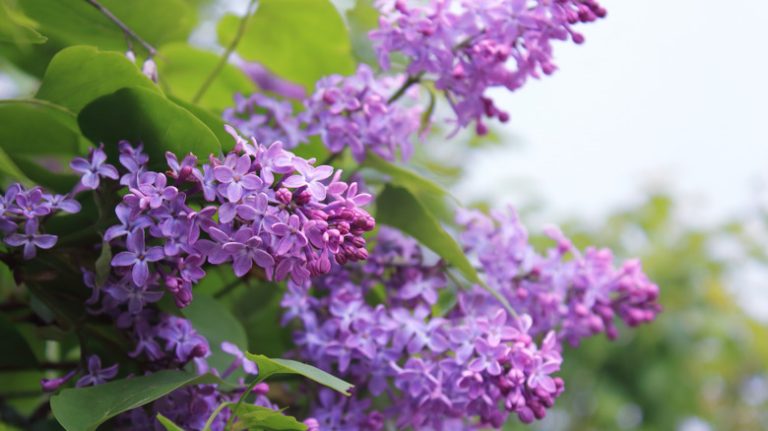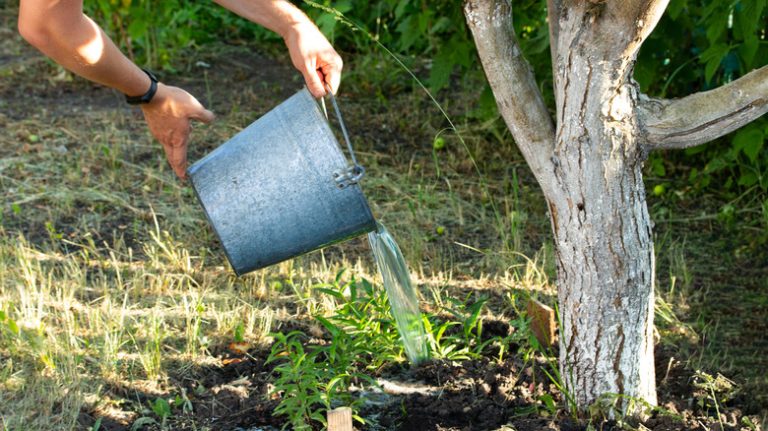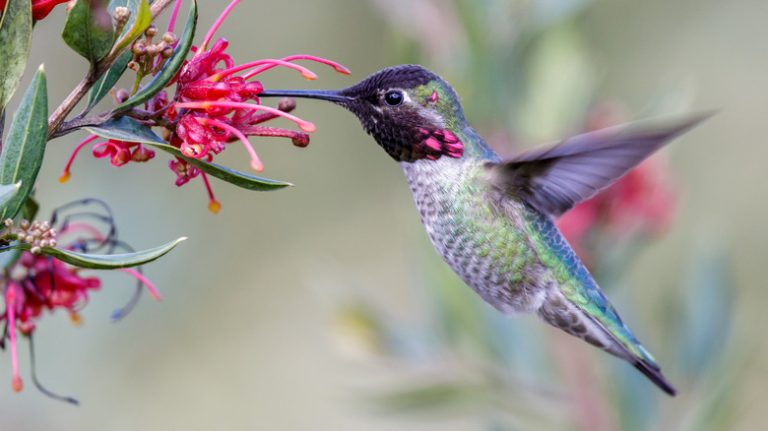Garden Trees, Shrubs & Vines
Juliana Lumaj
Hydrangeas are beautiful flowers that come in a multitude of colors, and each has its own meaning, according to Fresh Trimmings. Blue hydrangeas symbolize apology, pink represents sincere emotions, purple is meant to show your desire to understand someone else, and white is a representation of gloating. If your hydrangeas are currently white, and you’re looking to add more color, take a look at the condition of your soil, per Plant Addicts. Apparently, the more nitrogen your soil has, the less color there will be. So, adding the perfect ingredients will eventually get you the color you’re looking for.
If you’re looking to transform your white hydrangeas into a lovely shade of blue, there are a few easy steps for you to follow, according to Dammann’s Garden Company. Getting the chemistry of the soil right is key to producing the colors you’re after, and it doesn’t even require constant maintenance.
Increase levels of aluminum sulfate
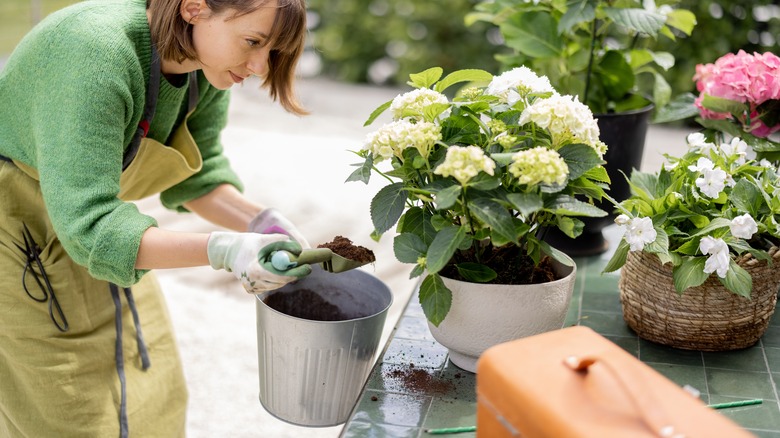
RossHelen/Shutterstock
Dammann’s Garden Company says that hydrangeas usually turn blue when they have a pH level of 5.5 or less. In order to reach these levels, acidify the soil with aluminum sulfate. You can purchase this at a nearby garden store and use it to make a mixture that you will put into the soil. You’ll have to mix a quarter ounce of aluminum sulfate with a gallon of water and then drench the soil around your hydrangeas during the spring when the plant starts to grow. During the growing season, you’ll only have to reapply this once in four weeks and then again in eight weeks.
You can also use other materials you have at home, such as coffee grounds, egg shells, or citrus fruit peels. After grinding them, you’ll have to push the mixture into the soil, but don’t expect to see your flowers change too much for at least a year.

